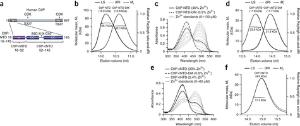News
Davies Group: new publication in Nature Structural and Molecular Biology

CtIP tetramer assembly is required for DNA-end resection and repair
Owen R Davies, Josep V Forment, Meidai Sun, Rimma Belotserkovskaya, Julia Coates, Yaron Galanty, Mukerrem Demir, Christopher R Morton, Neil J Rzechorzek, Stephen P Jackson and Luca Pellegrini
Mammalian CtIP protein has major roles in DNA double-strand break (DSB) repair. Although it is well established that CtIP promotes DNA-end resection in preparation for homology-dependent DSB repair, the molecular basis for this function has remained unknown. Here we show by biophysical and X-ray crystallographic analyses that the N-terminal domain of human CtIP exists as a stable homotetramer. Tetramerization results from interlocking interactions between the N-terminal extensions of CtIP's coiled-coil region, which lead to a 'dimer-of-dimers' architecture. Through interrogation of the CtIP structure, we identify a point mutation that abolishes tetramerization of the N-terminal domain while preserving dimerization in vitro. Notably, we establish that this mutation abrogates CtIP oligomer assembly in cells, thus leading to strong defects in DNA-end resection and gene conversion. These findings indicate that the CtIP tetramer architecture described here is essential for effective DSB repair by homologous recombination.
Published on: 5th January 2015
Last modified: Fri, 17 Jul 2015 13:31:39 BST